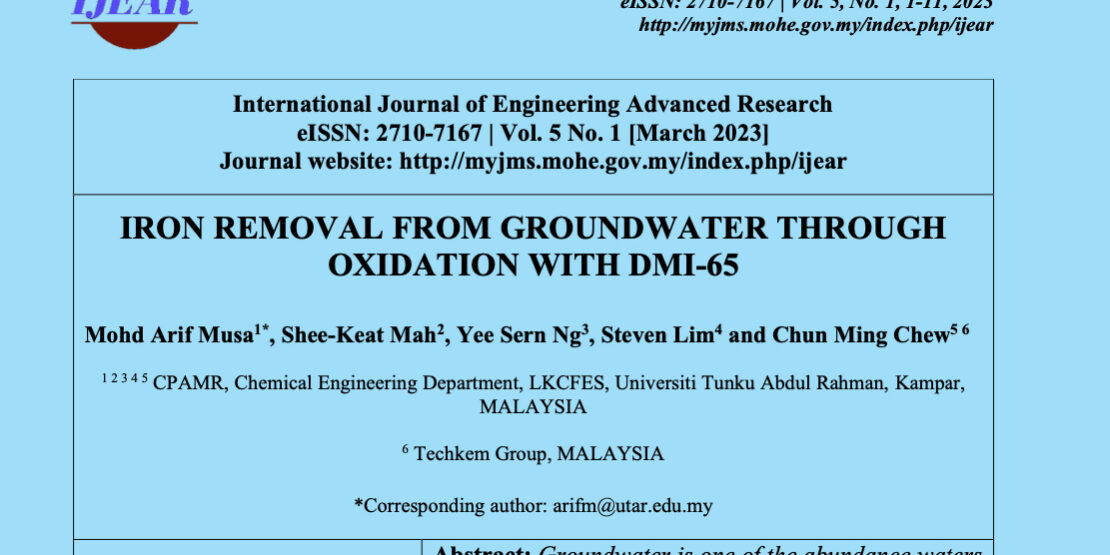Abstract: Groundwater is one of the abundance waters resources in Malaysia. Malaysia groundwater comes with various of natural minerals and these minerals need to be processed before the water can be used as potable water. High Iron content is one of the major issues of processing ground water in Malaysia. To comply with Malaysian National Drinking Water Quality Standards, the Iron concentration must be controlled below 0.3 ppm. Chemical oxidation is one of the effective methods to reduce the Iron content of the groundwater. The iron oxidation process however has a low reaction rate, especially at low PH. Various catalysts have been developed to improve the efficiency of iron removal via the oxidation process. One such catalyst that is commercially available is DMI-65. In this paper, we investigated the efficiency and operating limits of DMI- 65 in the removal of soluble iron from contaminated groundwater. Based on our results, DMI-65 is found to be very efficient in the removal of iron even at a very high level of iron contamination in the groundwater. This study found that groundwater at 7.4 ppm iron content can be oxidized to 0.126 ppm which is a 98.3% removal efficiency. A characterization of the catalyst was conducted to understand the surface characteristic of the catalyst. It was found that the catalysts shapes are non-uniform with average sizes of between 300 to 850 microns. The surface was found to exhibit various crevices that contribute a lot of additional surface areas for absorption of the iron. In addition to the above investigation, this study will also report on the proper preparation of DMI-65 prior to the introduction of the contaminated groundwater.

Categorías: Company News, Featured

















